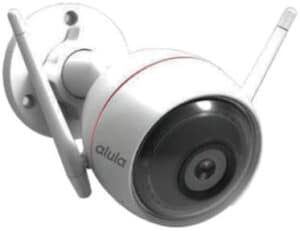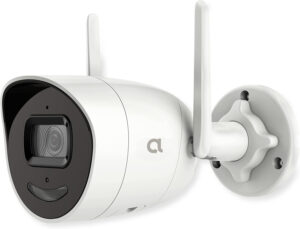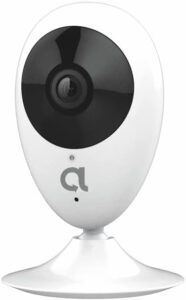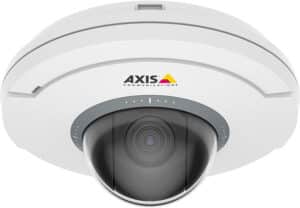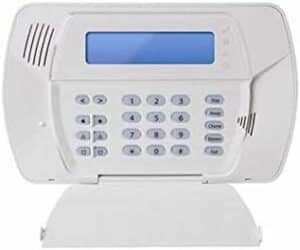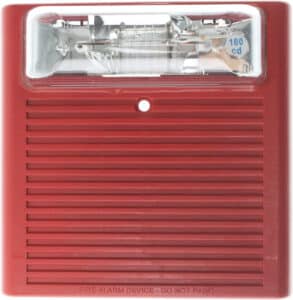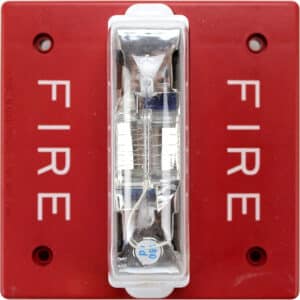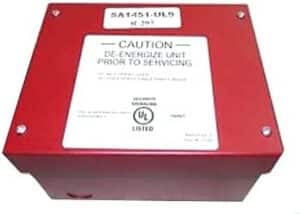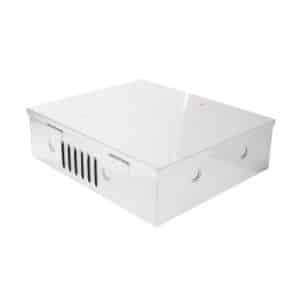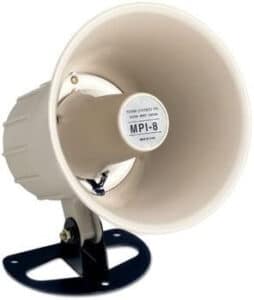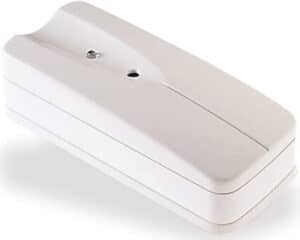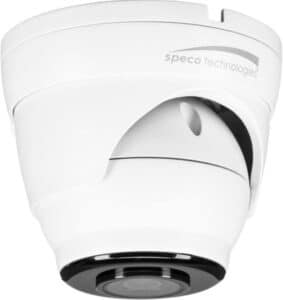How a Motion Detection Camera Can Help Take Your Home Security to the Next Level
The safety and security of your home and family are paramount. With a motion detection camera, you can take your home security to the next level and keep them safe.
This article will discuss the advantages of a motion detection camera, how it works, and how to use it to your advantage. We’ll explore the features of this technology and how it can help you protect your home from intruders and other potential threats. With a motion detection camera, you can rest assured that your home is being monitored and protected. Utilizing the power of this technology, you can rest easy knowing that you and your loved ones are safe and secure.
Table of Contents
5 Benefits of Installing a Motion Detection Camera in Your Home Security System
Motion detection cameras are an essential component of a modern home security system. By incorporating motion sensors into your security setup, you can help take your home security to the next level. Some of the benefits of installing a motion detection camera include:
Motion detection cameras are an essential component of a modern home security system. By incorporating motion sensors into your security setup, you can help take your home security to the next level. Some of the benefits of installing a motion detection camera include:
-
Enhanced monitoring: Motion detectors sense movement and trigger the camera to start recording, ensuring that you capture any suspicious activity around your property.
-
Energy efficiency: Since motion sensors work by detecting changes in infrared radiation, they only activate the camera when necessary, conserving energy.
-
Burglar deterrence: The presence of motion detection cameras can discourage potential intruders from attempting to break into your home.
-
Smart home integration: Many motion detection cameras are compatible with smart home systems like Google Assistant and Z Wave, allowing you to control your security system remotely.
-
Advanced features: Modern motion detection cameras often come with additional features such as color night vision, two-way audio, and cloud storage, making them an invaluable addition to any home security setup.
The Science Behind How Motion Sensors Work in Home Security Systems
Motion sensors, such as passive infrared (PIR) sensors, are a crucial element in home security systems. PIR sensors detect changes in infrared radiation, which is emitted by all warm objects, including the human body. When a subject moves within the sensor’s range, it triggers the motion detection camera to begin recording.
This technology allows motion detectors to differentiate between humans and other moving objects, ensuring accurate and efficient monitoring of your property.
How to Install Motion Sensors in Your Home for Optimal Security
To get the most out of your motion detection cameras, it’s essential to install motion sensors strategically throughout your home. Follow the manufacturer’s instructions for proper placement, and consider these tips for optimal security:
-
Position outdoor cameras in high-traffic areas, such as entryways and walkways.
-
Place indoor motion sensors in common areas like hallways and living rooms to monitor movement within your home.
-
Adjust the sensitivity settings on your motion detectors to reduce false alarms.
Outdoor vs. Indoor: Where to Install Motion Sensors for Maximum Home Security
When deciding where to install motion sensors for maximum home security, it’s essential to strike a balance between indoor and outdoor coverage. Outdoor cameras are crucial for monitoring the perimeter of your property and deterring potential intruders. However, indoor motion sensors can help detect movement within your home, ensuring that you remain aware of any unauthorized activity.
For outdoor security, mount cameras near entryways, driveways, and other high-traffic areas. Place motion sensors on windows and doors to detect any tampering.
Additionally, consider adding wireless sensors to the exterior of your home; these will alert you to any suspicious activity close to your property.
For indoor protection, place motion detectors in common areas like hallways and living rooms to monitor movement within your home. You can also install sensors in areas where valuables are stored, such as safes, to alert you if someone attempts to access them.
Finally, consider a comprehensive home security system that can link your motion sensors and cameras together for maximum protection. This will help you keep an eye on your home from anywhere with an internet connection.
Motion Detection Cameras with Color Night Vision: A Game-Changer for Home Security
Color night vision is an innovative feature that sets advanced motion detection cameras apart from other cameras on the market. Unlike traditional night vision, color night vision allows you to see a more detailed and accurate image in low-light conditions. This can help improve your home security by providing a clearer picture of any potential intruders or suspicious activity.
Motion detection cameras with color night vision can help you identify a person’s clothing, facial features, and other distinguishing characteristics in the dark. This can be a crucial element of home security, as it allows you to better assess a situation and take the appropriate action.
In addition to providing better visibility in the dark, motion detection cameras with color night vision can also be linked together with your other home security devices, such as alarms and lights. This way, any suspicious activity will trigger an alarm, and the lights in your home will turn on to provide additional illumination.
3 Ways to Connect Your Motion Detection Camera to Google Assistant
Integrating your motion detection camera with Google Assistant can enhance your home security experience. Here are three ways to connect your camera to Google Assistant:
-
Use the camera’s native app to link your camera to your Google Assistant account.
-
Install a Z Wave hub to connect your security system with Google Assistant.
-
Utilize third-party software or apps that support Google Assistant integration.
Understanding Passive Infrared Sensors and Why They’re Important in Home Security
Passive infrared (PIR) sensors are a vital component of motion detection cameras. PIR sensors detect changes in infrared radiation, allowing them to sense motion and trigger the camera to record. This technology is essential for home security because it enables motion detectors to accurately identify human activity and minimize false alarms.
PIR sensors are often used in home alarm systems to detect intruders and alert homeowners of potential security threats. This technology can also be used in home security cameras to trigger recording when motion is detected. Most home security cameras with PIR sensors have adjustable sensitivity settings, so homeowners can adjust the sensitivity to best suit their specific needs.
PIR sensors are also becoming increasingly popular in smart home devices. Smart lights, thermostats, and even door locks can be triggered by motion detected by PIR sensors. This technology can be used to create a smarter and more secure home, as it allows homeowners to control their devices remotely and immediately be notified of any unexpected activity in their homes.
The Role of PIR Sensors in Detecting Human Body Heat for Improved Home Security
PIR sensors play a significant role in improving home security by detecting the body heat emitted by humans. This allows motion detection cameras to differentiate between human movement and other moving objects, ensuring that your security system only records relevant activity.
PIR sensors can also be used to detect changes in ambient temperature, which is important for home security as it can indicate when someone is attempting to break in. If a temperature increase is detected when nobody is home, this could be an indication of an intruder.
Since P IR sensors are relatively inexpensive and easy to install, they can be used to create a smarter and more secure home. With the help of PIR sensors, homeowners can be notified of unexpected activity in their homes and even control their devices remotely. This provides an additional layer of security and peace of mind for homeowners.
Overall, PIR sensors play an important role in improving home security by detecting changes in temperature and human movement. This allows homeowners.
How Motion Detection Cameras Can Distinguish Between Humans and Other Moving Objects
Motion detection cameras use PIR sensors to sense changes in infrared radiation, allowing them to distinguish between humans and other moving objects. By identifying human movement, motion detection cameras can minimize false alarms and focus on capturing relevant security footage.
The PIR sensors inside motion detection cameras have a wide field of view and can detect movement from up to several meters away. This range allows them to capture footage of any human activity that takes place in the vicinity. The motion detection camera also has a high sensitivity setting, which allows it to detect even the smallest of movements.
In addition to using PIR sensors, motion detection cameras can also employ other technologies such as facial recognition, object classification, and pattern recognition to differentiate between humans and other objects. Facial recognition, for instance, can be used to recognize a specific individual or group of individuals, while object classification and pattern recognition can identify objects such as cars and animals.
By processing data from PIR sensors, facial recognition, object classification, and pattern recognition, motion detection cameras can accurately detect and record human movement and reduce false alarms. These cameras are increasingly being used in homes, businesses, and security systems.
Cloud Storage: An Essential Feature for Home Security Motion Detection Cameras
Cloud storage is a crucial feature for motion detection cameras, as it allows you to store and access your security footage remotely. This provides added convenience and peace of mind, knowing that your data is securely stored and easily accessible in case of an emergency.
Cloud storage also reduces the need for physical storage media, such as hard drives, and is often available for free or at a low cost. Finally, cloud storage enables you to access your footage from any location, giving you the freedom to monitor your home or business from anywhere.
Two-Way Audio: A Powerful Tool for Homeowners When Paired with Motion Detection Cameras
Two-way audio is a valuable feature when paired with motion detection cameras, as it allows you to communicate with people on your property directly. This can be beneficial for deterring potential intruders or communicating with visitors and family members.
Two-way audio also offers a layer of security, as you can remotely monitor and respond to any suspicious activity on your property. Additionally, two-way audio can be used to give instructions or provide information to people on your property, allowing you to remotely monitor and manage any situation.
Home Security System 101: What You Need to Know About Motion Detectors
Motion detectors are a crucial component of any home security system. They use PIR sensors to sense motion, triggering the camera to record when movement is detected. Understanding how motion detectors work and how to effectively install motion sensors can help you take your home security to the next level.
Motion detectors come in various shapes and sizes and can be used both indoors and outdoors. When installing a motion detector, consider the size of the area you need to cover and the type of motion you want to detect. For example, if you need to detect motion in a large area, you may need to use several motion detectors or use a combination of a PIR (passive infrared) sensor and a microwave sensor.
Motion detectors can also be used to activate lights or other security devices. For example, you can use a motion detector to trigger a light when someone enters a room. This can be helpful for deterring intruders and making your home safer.
When it comes to motion detectors, placement is key. You should position your motion detectors in areas where they can detect motion without false alarms. Make sure they are not close to sources of heat or heat vents, as this can trigger false alarms. Also consider the height and angle of the motion detector, as this can also affect its sensitivity.
Finally, make sure you use motion detectors that are compatible with your existing security system. This will ensure that all your security devices are connected and can work together to provide maximum protection.
Z Wave Integration: How to Connect Your Motion Detection Camera to Your Home Security Network
Connecting your motion detection camera to your home security network using Z Wave technology can enhance your security system. Z Wave integration allows you to control your security system remotely and receive real-time notifications when motion is detected.
First, you will need to purchase a Z Wave-compatible have a compatible device, and you will need to connect it to your home security network. You can do this by connecting it to a Z Wave-enabled hub motion detection camera. You can find these devices at most home automation stores.
Once you have a compatible device, you will need to connect it to your home security network. You can do this by connecting it to a Z Wave-enabled hub. This hub will allow you to control your security system remotely and receive real-time notifications when motion is detected.
Once the camera is connected to the Z Wave-enabled hub, you should be able to set up motion detection settings. This includes setting the sensitivity of the motion detection, the area to be monitored, and whether you want to receive notifications. You can also control the camera’s settings remotely via a smartphone or tablet.
Professional Installation vs. DIY: What You Need to Know About Installing a Motion Detection Camera
When it comes to installing motion detection cameras, you have the option of hiring professionals or going the DIY route. Both options have their pros and cons:
The professional installation offers expert guidance and ensures that your camera is correctly installed, but it can be costly.
DIY installation is more affordable and allows you to customize your security system, but it requires some technical know-how and might not be as reliable.
Ultimately, the choice between professional installation and DIY depends on your budget, skills, and preferences.
From Burglar Deterrence to Fire Detection: The Many Uses of Motion Detection Cameras in Home Security Systems
Motion detection cameras offer numerous benefits for home security systems. In addition to deterring burglars and capturing suspicious activity, they can also help detect fires and other safety hazards. By incorporating motion detection cameras into your home security system, you can take your safety and peace of mind to the next level.
Motion detection cameras can sense even the slightest movements, allowing them to alert you to any potential danger. They can detect smoke, flames, and carbon monoxide, helping to protect your home from fire. They can also detect water leaks and other issues, helping to prevent damage to your property. Motion detection cameras can also be used to monitor your home while you’re away. You can set up cameras to alert you when someone enters a room or area, giving you added peace of mind.
Motion detection cameras can be used both indoors and outdoors. In order to get the most out of your home security system, you should consider the type of camera that is best suited for your home. Depending on the size of your home and the level of security you want, you can choose from a variety of motion detection cameras. You can also install multiple cameras in different areas of your home to ensure maximum coverage.
Motion detection cameras can be powered by batteries or by a power source like an AC outlet. They are typically easy to install, and some models come with a wireless receiver so that they can be controlled remotely. You can program the motion detection cameras to alert you when motion is detected, or you can set them up to record video for later viewing.
Motion detection cameras can help protect your home and provide added peace of mind while you’re away. With the right cameras and the right setup, you can make sure that your home is always secure.
Conclusion
Having a motion detection camera as part of your home security system can make all the difference when it comes to keeping your home safe. It can detect intruders, monitor your property, and alert you to potential threats. With the right camera, you can keep your home safe and secure, even when you’re away.
At Xcessory Zone, we offer a range of DIY home security options, from motion detection cameras to alarm systems. Our products are easy to install and come with a range of features, so you can rest easy knowing your home is secure.
Take your home security to the next level with Xcessory Zone. Visit our website now and browse our range of DIY security products to find the perfect solution for your home. Don’t wait – take action today and keep your home safe.
FAQs
Do motion cameras record all the time?
Most motion detectors, such as those commonly found on Zoom cameras, are programmed to record continuously. However, this is not always the case. Some motion detectors are only activated when motion is detected, meaning that the camera will only record when it senses movement.
This is a more energy-efficient and cost-effective way of recording, as the camera does not need to be running all the time. Furthermore, this method ensures that only relevant footage is captured, as the camera will not be recording when no movement is detected.
What are the three types of motion sensors?
The three common types of motion sensors are Passive Infrared (PIR) sensors, Speed sensors, and Ultrasonic sensors. A PIR sensor detects changes in infrared light, usually caused by the movement of a person or animal. Speed sensors measure the speed of a moving object, such as a vehicle or person. Ultrasonic sensors use high-frequency sound waves to detect motion.
These three types of motion sensors are used in a variety of applications, from home security to automotive safety. PIR sensors are commonly used in home security systems, while speed sensors are used to monitor the speed of vehicles on roads. Ultrasonic sensors are used in public walkways to detect the presence of pedestrians. Each type of motion sensor has its own advantages and disadvantages, so it is important to understand the needs of the application before selecting the appropriate type.
What is the difference between a motion sensor and a security camera?
Motion sensors and security cameras are both useful tools for home security, but they serve different purposes. Motion sensors detect movement in a specific area and can trigger an alarm or alert when motion is detected.
They are typically used to protect outdoor areas or as part of an alarm system. Security cameras, on the other hand, capture video footage that can be recorded and monitored for surveillance purposes. Security cameras can be used indoors or outdoors and are often used to monitor entryways, driveways, and other areas of a home or business.
Meet Our Partners!




